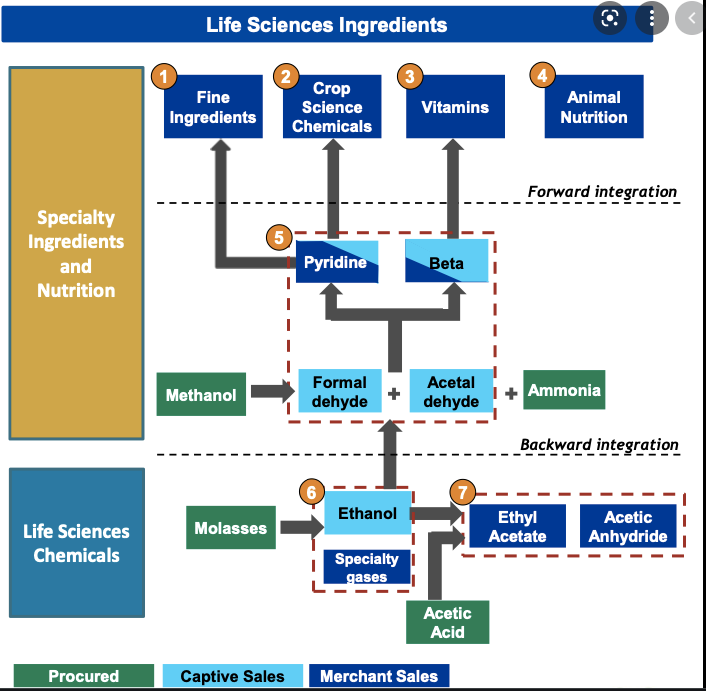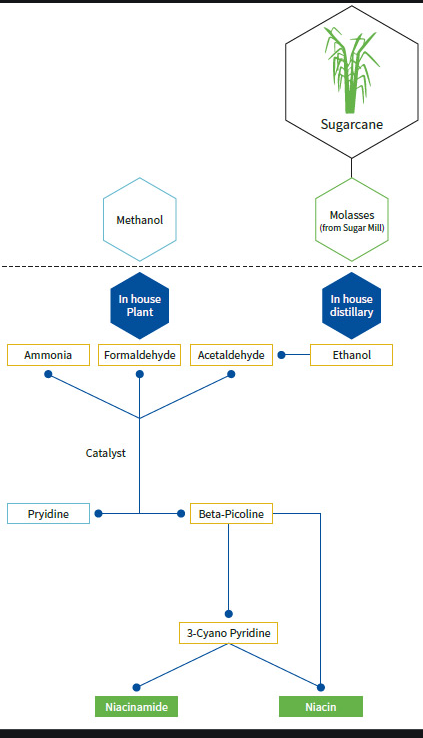
Caustic soda industry per Gyan ( Source chemicals weekly )
Caustic soda can be manufactured through
1-diaphragm cell
2-mercury cell
3-membrane cell technologies.
Manufacturing it using diaphragm cell technology has become obsolete and is no longer in use in India.
Caustic soda can be manufactured through
1-diaphragm cell
2-mercury cell
3-membrane cell technologies.
Manufacturing it using diaphragm cell technology has become obsolete and is no longer in use in India.
Furthermore, due to environmental concerns associated with the mercury cell technology,
the sector has gradually transitioned from mercury cell to membrane cell technology, which is co-friendly and
consumes 25% lesser energy.
the sector has gradually transitioned from mercury cell to membrane cell technology, which is co-friendly and
consumes 25% lesser energy.
India had been using mercury cell technology for
a long time, which made Indian caustic
soda costlier on the back of higher pollution control and power cost involved in manufacturing through this technology. India faced threat of heavy dumping from other countries wherein cost
a long time, which made Indian caustic
soda costlier on the back of higher pollution control and power cost involved in manufacturing through this technology. India faced threat of heavy dumping from other countries wherein cost
of production was much lower due to their early shift to membrane cell technology. However, mostly all the caustic soda plants in India are now based on
membrane cell technology, making India at par with other countries in terms of technology.
membrane cell technology, making India at par with other countries in terms of technology.
The share of import of caustic soda, as a percentage of total domestic consumption, reduced to less
than 10% during FY21, as against 17-18%
witnessed around five to six years ago,
while exports have seen a rising trend
in the last five years ended FY21
than 10% during FY21, as against 17-18%
witnessed around five to six years ago,
while exports have seen a rising trend
in the last five years ended FY21
Declining power cost-
Caustic soda is produced by way of
electrolysis of salt, which is an energy intensive process; power cost is a major
input cost comprising around 60% of the
total cost of manufacturing it in India.
Caustic soda is produced by way of
electrolysis of salt, which is an energy intensive process; power cost is a major
input cost comprising around 60% of the
total cost of manufacturing it in India.
Total cost of power was very high
earlier, mainly due to usage of mercury
cell technology, which entailed power
consumption of 3,150-3,300 kWh/tonne
of caustic soda manufactured and secondly due to total reliance on conventional sources of thermal power,
earlier, mainly due to usage of mercury
cell technology, which entailed power
consumption of 3,150-3,300 kWh/tonne
of caustic soda manufactured and secondly due to total reliance on conventional sources of thermal power,
which has now proved to be costlier compared
with renewable energy sources.
However, with transition to membrane cell technology, the industry’s average power consumption has
reduced by 25% to 2,300-2,450 kWh/ tonne of caustic soda production.
with renewable energy sources.
However, with transition to membrane cell technology, the industry’s average power consumption has
reduced by 25% to 2,300-2,450 kWh/ tonne of caustic soda production.
Hence, in terms of consumption of units of power, India is now at par with other caustic soda-producing countries.
This, coupled with the gradual rise in the relatively cheaper renewable power capacity, has resulted in a declining trend in the per unit cost of power consumed,
This, coupled with the gradual rise in the relatively cheaper renewable power capacity, has resulted in a declining trend in the per unit cost of power consumed,
which would make the cost of power consumed for producing caustic soda in India largely at par with other countries in the medium term.
-Growing applications of co-products
of caustic soda
Chlorine and hydrogen are co-products of caustic soda, i.e., generation of one automatically leads to generation of another.
With the production of 1 MT of caustic soda, 0.89 MT of chlorine and 25 kg of hydrogen gas is produce
of caustic soda
Chlorine and hydrogen are co-products of caustic soda, i.e., generation of one automatically leads to generation of another.
With the production of 1 MT of caustic soda, 0.89 MT of chlorine and 25 kg of hydrogen gas is produce

Chlorine -Globally 38% of the chlorine produced is
used by the vinyl industry, whereas it is
only 8% in India in the absence of bulk
demand from vinyls. Consequently, the
caustic-chlorine industry in India is
mainly caustic driven, unlike the rest of
the world,
used by the vinyl industry, whereas it is
only 8% in India in the absence of bulk
demand from vinyls. Consequently, the
caustic-chlorine industry in India is
mainly caustic driven, unlike the rest of
the world,
where it is chlorine driven.
In India, chlorine fetched negative realisation at times due to its associated disposal costs, which put pressure on the ECU realisations, thereby making
Indian caustic soda less competitive.
In India, chlorine fetched negative realisation at times due to its associated disposal costs, which put pressure on the ECU realisations, thereby making
Indian caustic soda less competitive.
During FY20, India produced 1.514-mt of polyvinyl chloride (PVC) resin, while imports of the polymer
were at 1.916-mt, making India the world’s largest importer. However, the scenario is expected to change now as India has announced
were at 1.916-mt, making India the world’s largest importer. However, the scenario is expected to change now as India has announced
the second-highest capacity addition of PVC at 1.74-mtpa by 2025, after China. Hence, the challenge and costs associated with disposal of chlorine is expected to gradually subside going forward. See PVC Production process in Diagram 

In the past three years, the realisations of chlorine have turned positive for domestic players and the trend is expected to continue going forward, which should support the ECU realisation of the sector
Hydrogen
In India, around 40% of the hydrogen produced is captively consumed, either as a fuel in boilers or for manufacturing of other downstream products, while around 30% of hydrogen is converted into low-value hydrochloric acid (HCl) by reacting it with chlorine.
In India, around 40% of the hydrogen produced is captively consumed, either as a fuel in boilers or for manufacturing of other downstream products, while around 30% of hydrogen is converted into low-value hydrochloric acid (HCl) by reacting it with chlorine.
Higher value is obtained from the balance around 30% of hydrogen only, as it is either sold to third party in a compressed form (for use in hydrogenation plants) or consumed to make other products like hydrogen peroxide.
Hydrogen gas is presently used in varied industries such as chemicals, petroleum refining, metallurgical,
glass and electronic industries. Hydrogen burns as a clean fuel, producing water as a by-product that makes it an efficient energy carrier and a clean
and ecologically
glass and electronic industries. Hydrogen burns as a clean fuel, producing water as a by-product that makes it an efficient energy carrier and a clean
and ecologically
balanced fuel. During the Union budget speech in February 2021, the Honourable Finance
Minister announced the launch of the
Hydrogen Energy Mission to produce
hydrogen from renewable sources. In
April 2021, the Indian Hydrogen Alliance was formed for commercialising
Minister announced the launch of the
Hydrogen Energy Mission to produce
hydrogen from renewable sources. In
April 2021, the Indian Hydrogen Alliance was formed for commercialising
hydrogen technology and developing green and blue hydrogen in the country.
Hydrogen is rapidly emerging as an alternative fuel choice to combat climate change and achieve de-carbonisation across industries.
Hydrogen is rapidly emerging as an alternative fuel choice to combat climate change and achieve de-carbonisation across industries.
Thus, with India’s focus towards transition to cleaner
energy, the usage and significance of hydrogen is bound to increase leading to its improved realisation.
All these structural changes (some of which are already underway) are expected to result in a more sustainable
energy, the usage and significance of hydrogen is bound to increase leading to its improved realisation.
All these structural changes (some of which are already underway) are expected to result in a more sustainable
rebound in profitability of the Indian
caustic chlorine industry.
caustic chlorine industry.
• • •
Missing some Tweet in this thread? You can try to
force a refresh







